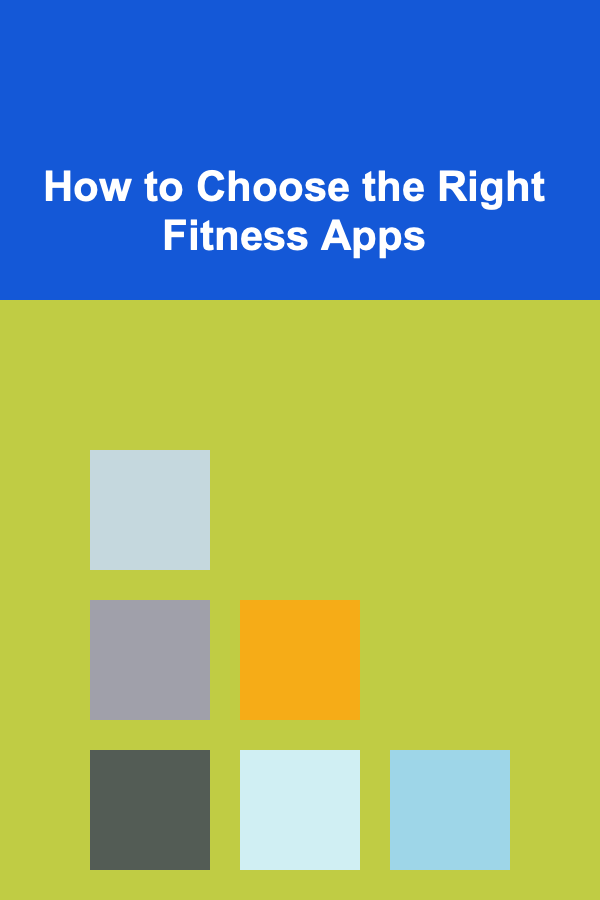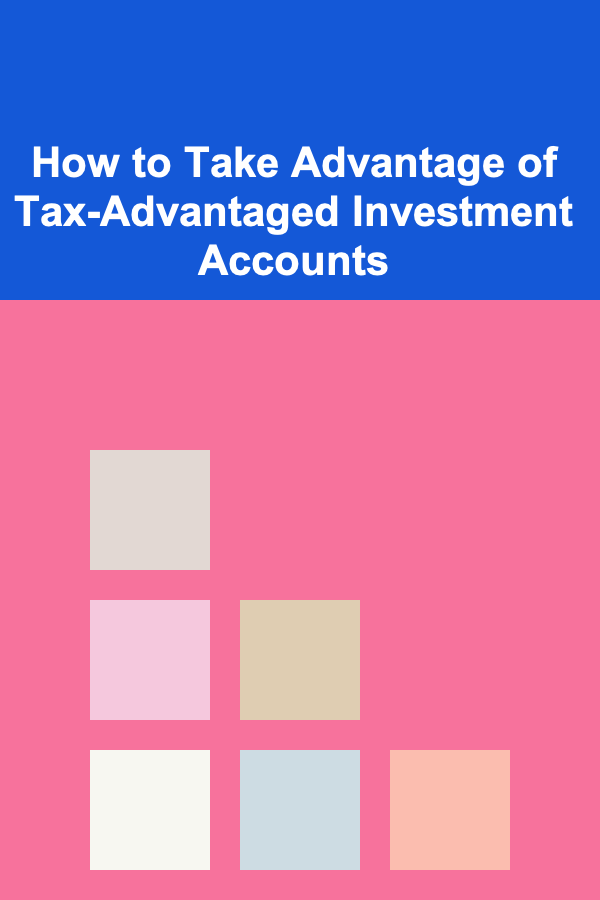
How to Choose the Right Fitness Apps
ebook include PDF & Audio bundle (Micro Guide)
$12.99$8.99
Limited Time Offer! Order within the next:

In recent years, fitness apps have become indispensable tools for people who want to improve their health, track their fitness progress, and stay motivated to reach their physical goals. The vast array of fitness apps available today can make it overwhelming to choose the right one. Whether you're looking to lose weight, build muscle, increase flexibility, or simply stay active, the right fitness app can make a world of difference. This article will guide you through the process of choosing the right fitness app, focusing on key factors such as your fitness goals, app features, compatibility, and the science behind the recommendations.
Understanding Your Fitness Goals
Before diving into the features of various fitness apps, it's important to first understand your own fitness goals. Fitness is a broad term, and depending on your specific goals, different apps may suit you better. Broadly speaking, there are four main types of fitness goals:
- Weight Loss: If your primary goal is to lose weight, you may need an app that helps you track your calorie intake, monitor your food choices, and suggest workouts that burn fat efficiently.
- Muscle Building: If your goal is to gain muscle mass, you'll need a fitness app that offers strength training exercises, progressive overload tracking, and workout plans for hypertrophy (muscle growth).
- Endurance Training: If you're preparing for a long-distance event, such as running a marathon or cycling a long route, you'll need an app that provides detailed training schedules, tracks your performance over time, and gives you feedback on how to improve your endurance.
- General Fitness and Wellness: For those who simply want to stay healthy and active without a specific goal in mind, an app offering a variety of workouts (from yoga to HIIT) and wellness tools like sleep trackers or meditation can be ideal.
Knowing your fitness goals will narrow down the options available and help you find an app with features that best suit your needs.
Key Features to Look for in Fitness Apps
Fitness apps come with a range of features that can enhance your workout experience. The best fitness apps often combine several of these features to cater to different needs. Here's a rundown of essential features to look for when choosing a fitness app:
1. Workout Variety and Customization
One of the most important aspects of a fitness app is its workout variety. A diverse set of exercises keeps you engaged and ensures that your body does not adapt too quickly to a specific routine. Look for apps that offer multiple workout categories such as strength training, yoga, cardio, flexibility, and mobility exercises. Some apps also allow you to create personalized workout plans or adjust them as you progress, which is ideal for users with evolving fitness levels.
2. Progress Tracking
Tracking your progress is crucial for understanding how far you've come and how much more you need to push yourself. Look for apps that offer built-in tools for tracking metrics like calories burned, distance covered, weight lifted, or number of steps taken. Some apps also sync with external devices like fitness trackers (e.g., Fitbit, Apple Watch, or Garmin), which can provide more detailed data.
3. Nutrition and Diet Support
Nutrition plays a significant role in achieving fitness goals, whether you're aiming for weight loss, muscle gain, or improved athletic performance. Some fitness apps come with built-in diet tracking features that help you monitor your food intake, plan meals, and achieve a balanced diet. Apps that include a barcode scanner to track packaged foods or offer calorie counting can also be very helpful.
4. Motivation and Community Support
Motivation is a common challenge when it comes to fitness. Some apps have built-in features to keep you motivated, such as rewards for completing workouts, reminders to stay active, or integration with social media platforms where you can share achievements. Additionally, many fitness apps now include community features where users can interact, share progress, and support one another, which can be a great source of accountability.
5. Expert Guidance and Education
When starting a fitness journey, it's important to learn proper form and technique to avoid injury. Many apps offer expert guidance from certified trainers who design the workout plans or provide instructional videos. These apps may also include educational content like blog posts, podcasts, or articles on nutrition, mental health, and lifestyle changes, helping you make informed decisions about your fitness journey.
6. Cost and Subscription Options
Fitness apps are available in both free and paid versions. Free apps typically offer basic features, while paid versions often provide premium features such as advanced tracking, personalized coaching, or exclusive content. Before choosing an app, consider your budget and whether the subscription fee is justified by the value it provides. Many apps offer a free trial, which is a great opportunity to test out the features before committing.
7. Integration with Wearable Devices
If you already use a fitness tracker or smartwatch, it's beneficial to choose an app that integrates with these devices. Wearables can offer real-time data on your heart rate, steps, sleep patterns, and calories burned. Apps that sync seamlessly with these devices can provide a more comprehensive view of your fitness progress and enhance the accuracy of tracking.
8. Ease of Use and Interface
The user interface (UI) of the app should be intuitive and easy to navigate. A complicated app can become frustrating and may deter you from sticking to your fitness routine. Whether you're setting up a workout, logging meals, or reviewing progress, the app should be user-friendly and provide clear instructions.
9. Offline Access
Sometimes, you may find yourself in areas with limited internet access. If you're traveling or working out in a remote location, having offline access to your workouts or progress can be a huge benefit. Some apps offer the option to download workouts so you can use them without an internet connection.
Popular Fitness Apps and Their Features
Now that we have a clear understanding of what to look for in a fitness app, let's explore some of the most popular fitness apps and their unique features:
1. MyFitnessPal
- Main Features: Calorie counting, meal tracking, integration with wearables, progress tracking.
- Best For: Users looking for comprehensive nutrition tracking along with fitness monitoring.
- Pros: Easy-to-use food database, large community support, integrates with many fitness apps and devices.
- Cons: Some features require a premium subscription.
2. Nike Training Club
- Main Features: Workout variety, expert-guided workouts, progress tracking.
- Best For: Users who prefer structured workout plans and a variety of exercise styles.
- Pros: Offers both free and premium content, high-quality instructional videos, a mix of strength, endurance, and mobility workouts.
- Cons: Some users may find it lacking in nutrition tracking features.
3. Strava
- Main Features: Endurance training for runners and cyclists, GPS tracking, social features.
- Best For: Runners, cyclists, and endurance athletes.
- Pros: Strong community support, detailed performance tracking, GPS integration.
- Cons: Premium subscription required for advanced features like detailed analysis and goal setting.
4. Fitbit
- Main Features: Fitness tracking, sleep monitoring, activity tracking, health reports.
- Best For: People who use a Fitbit device or want a full picture of their overall health.
- Pros: Great for tracking daily activities, integrates seamlessly with Fitbit wearables.
- Cons: Some features are exclusive to paid subscriptions, limited workout variety compared to other apps.
5. Jefit
- Main Features: Strength training, workout tracking, exercise library.
- Best For: Users focused on bodybuilding and strength training.
- Pros: Extensive library of exercises, ability to log weight lifted and sets.
- Cons: Premium subscription required for full access to advanced features.
6. Headspace
- Main Features: Guided meditation, mental wellness, mindfulness exercises.
- Best For: Users who want to focus on mental health alongside physical fitness.
- Pros: Excellent meditation and mindfulness content, user-friendly interface.
- Cons: Limited physical fitness content, subscription required for full access.
Conclusion
Choosing the right fitness app depends on your personal fitness goals, preferences, and needs. Whether you're looking for a comprehensive app to track workouts, a nutrition-focused tool to help you lose weight, or a mindfulness app to support mental wellness, there's a fitness app out there that can help you achieve your goals. By considering the features, ease of use, compatibility with your devices, and cost of different apps, you can make an informed decision that aligns with your fitness journey. Ultimately, the best fitness app is the one that keeps you motivated, helps you track your progress, and supports your goals in a meaningful way.

How To Deal with Anxiety About School
Read More
How to Take Advantage of Tax-Advantaged Investment Accounts
Read More
How to Use Baskets and Trays to Declutter Your Desk
Read More
How To Build a Worm Composting Bin
Read More
How To Learn a Language with Dyslexia: A Deep Dive into Strategies and Empowerment
Read More
10 Tips for Creating an Engaging Conference App
Read MoreOther Products

How To Deal with Anxiety About School
Read More
How to Take Advantage of Tax-Advantaged Investment Accounts
Read More
How to Use Baskets and Trays to Declutter Your Desk
Read More
How To Build a Worm Composting Bin
Read More
How To Learn a Language with Dyslexia: A Deep Dive into Strategies and Empowerment
Read More